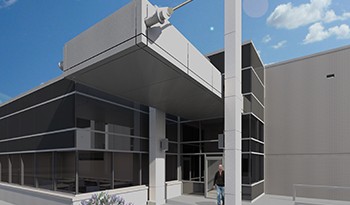Feds Advance Open Data Roadmap Despite Challenges
The DATA Act aims to bring transparency to government spending, but officials are mindful of the compliance burden and cultural challenges in effecting reform.
Elected powers are walking ahead with another structure for opening government information, a procedure that expects to unite division and office datasets into an institutionalized organization and make them available for people in general.
Christina Ho, representative aide secretary for bookkeeping approach and monetary straightforwardness at the Treasury Department, as of late gave a report on the rollout of the 2014 DATA Act, a clearing bill that interestingly commands an all encompassing framework for making government spending information straightforward and openly accessible.
Ho’s group and their partners at the Office of Management and Budget have everything except completed their work in creating normal information models, she said in an online presentation facilitated by Federal Computer Week.
“That is a huge achievement,” Ho says. “Since the work on information standard is done, everyone’s eyes are on usage.”
Ho clarifies that the DATA Act means to separate the siloes in which office information is regularly put away, a piece of a more extensive social change trying to build up a more transparent innovation environment inside of the central government.
To a limited extent, the push for open, institutionalized and searchable information originates from the acknowledgment that the administration’s way to deal with the data it gathers and stores could be much more proficient than it has been before, when offices have again and again misused a significant resource by keeping information walled off from different offices and the general population.
“Information’s ton in the administration is in dissimilar frameworks,” He says. “The goal is to empower the information to be devoured and utilized by numerous groups.”
The DATA Act, with its emphasis on elected uses, hopes to sparkle a light on the arcane and frequently dark stadium of government compelling so as to contract, to some extent organizations to distribute full datasets enumerating their going through exercises with definitive objectives of enhancing efficiencies and decreasing waste, misrepresentation and misuse.
Ho says that as Treasury and OMB authorities have been creating direction for organizations, they are touchy to the potential consistence trouble new information commands could involve, especially as spending plans have stayed tight all through the government group.
“Information is the main asset we’re getting a greater amount of each day,” she says. “We need to minimize the expense and office trouble. We realize that offices are presently working in an undeniably spending plan compelled environment.”
Ho depicts an “information driven methodology” to uniting dissimilar datasets, and says that the tech groups have been working in an iterative manner to build up the information principles, with “variant 0.5” having been discharged prior this midyear, and the following eliminate on track to come in the fall.
That way, organization CIOs can assimilate the new information necessities slowly, moving toward a more coordinated improvement prepare that is regular to the private part, however hasn’t generally been grasped inside the administration.
“It’s a major society change,” He says. “Whenever that you’re attempting to change something it’s a noteworthy change-administration challenge.”
The DATA Act rollout intends to make government spending information “institutionalized, solid and available to people in general” by May 2017, Ho says. Meanwhile, organization CIOs and different pioneers will be tasked with arranging a group to deal with the information move, taking stock of their information resources and setting up a component for reporting spending information in the institutionalized configuration.
Ho says her group is endeavoring to accomplish an easy to use interface for the way the information will at last get to be accessible to analysts or designers who need to run near investigations that could yield new bits of knowledge into how the administration spends citizens’ cash, and uncover potential open doors for cutting expenses.
“We truly would prefer not to regard this as a consistence exercise,” He says, “on the grounds that no one has additional assets around to attempt to do something that does not make esteem for offices.”



